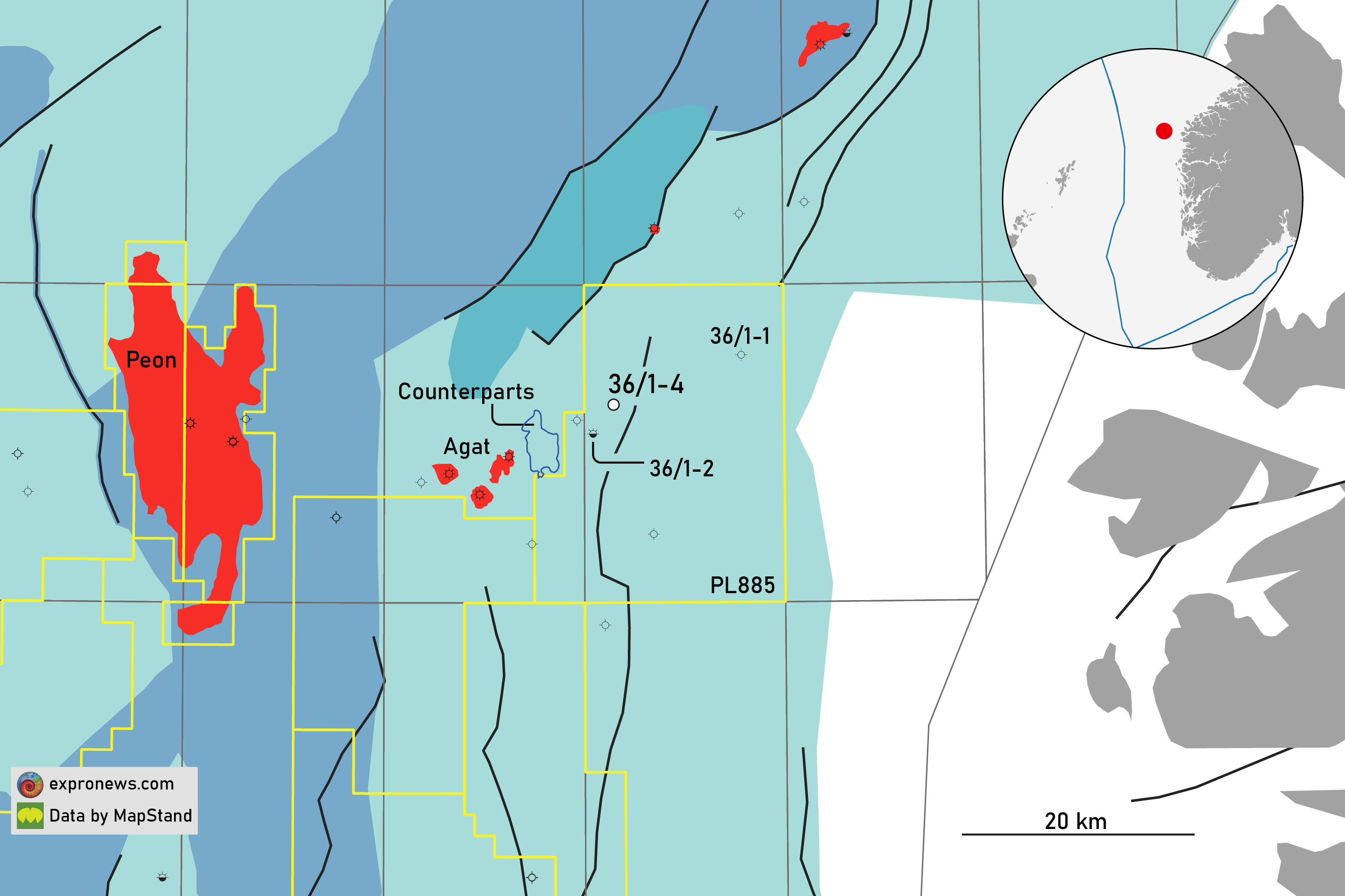In the northernmost region of the Norwegian Northern North Sea, Wellesley Petroleum and partner Petoro (20%) are in the process of drilling well 36/1-4 in PL 885 in an attempt to prove oil in the Hemispheres prospect.
The well is located in the most northern and landward block that was opened up for licence applications by the Norwegian Government in the 1970’s, and saw two wells drilled in 1975 targeting the Jurassic succession that is also the main candidate for 36/1-4.
Eastern margin of the North Sea Basin
Both 1975 wells (36/1-1 and 36/1-2) drilled into basement. Comparing the depths at which crystalline rocks were found in the two wells is a nice illustration of the peripheral setting of the area; well 36/1-2 hit basement at 3,233 m while 36/1-1 only had to drill 1,568 m to get to the same stratigraphic level.
Well 36/1-2, drilled by Saga Petroleum, is only about 3 kilometres to the southwest of the well that is currently being drilled by Wellesley. Besides targeting the Jurassic, Cretaceous sandstones formed an objective too. However, only some shows mostly described as “tarry dead oil” were encountered in sandstones of the Cretaceous Agat Fm as well as in what was interpreted as Intra-Heather sandstones at the time.
Well 36/1-1, drilled by Amoco, reported minor quantities of hydrocarbons in the Cretaceous and Jurassic and “no major shows.” It is therefore surprising to see that the Middle Jurassic reservoir was still tested through a DST, but no fluids were brought to surface unfortunately.
It will be interesting to see what Wellesley and Petoro are going to encounter in 36/1-4. No doubt the partnership had access to better seismic data than Amoco and Saga did in the 1970’s.
Immediately west of licence PL885, Wellesley mapped another Krossfjord prospect in the now relinquished licence PL884 – the relinquishment report for this licence is available through the NPD website. This four-way dip closure called Counterparts was thought to consist of gravity flows of shallow marine sands prograding westwards across the Horda Platform. Reservoir quality was deemed the highest risk for Counterparts, which was thought to be at around 3,400 m.
The Hemispheres prospect is a bit shallower than Counterparts – TD is expected at 3245 m – and in a slightly more proximal setting with regards to the Krossfjord delta.
The targeted volume for Hemispheres is not known, but given that it is not close to existing oil infrastructure it can be expected that the P50 volume may have standalone potential.
HENK KOMBRINK





